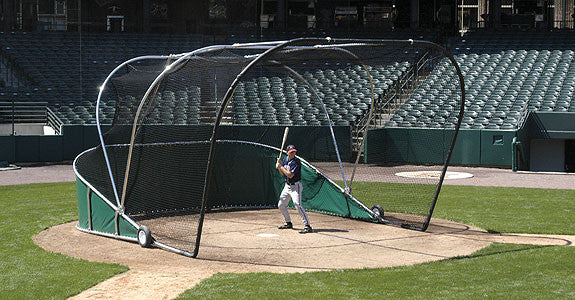If the batter does not pull the bat out of the strike zone while in the bunting position, it's an automatic strike.
The batter must actually make an attempt to bunt the pitch in your judgment for it to be ruled a strike. Just leaving it in the strike zone is not enough to consider it an attempt.
---------
. The batter is out if a bunted ball hits the ground and bounces back up and hits the bat while the batter is holding the bat.
If the batter is in the batter’s box when this occurs, it is simply a foul ball. If he is out of the batter’s box at this time, he is ruled out for interference.
---------
The batter is out if his foot touches the plate.
This is true if the entire foot is out of the batter’s box when it touches the plate. Having the foot touch the plate and the batter’s box is not considered out of the batter’s box.
---------
The batter-runner is always out if he runs outside the running lane after a bunted ball.
The batter-runner is only out if he is outside the running lane when he causes the fielder at 1st base to have trouble receiving the throw or he is hit with the throw while he is outside of the running lane.
---------
A runner is out if he slaps hands or high-fives other players, after a homerun is hit over the fence.
In high school and professional baseball this is not true. In NCAA baseball, the 1st time this occurs, it would become a team warning and the next time it occurs it would be an ejection but it is never an out.
---------
Tie goes to the runner.
In baseball, there are no ties. The rule does state that if the ball beats the runner, the runner is out. If the runner beats the ball, he is safe. So, if it is a tie, it really goes to the defense and not the offense.
--------------------
The runner gets the base he's going to, plus one on a ball thrown out-of-play.
The runner gets 2 bases usually from the time of the pitch and other times he would get 2 bases from the time of the throw. There are no one plus one awards. There are only 1, 2, 3 & 4 base awards.
---------
Anytime a coach touches a runner, the runner is out.
The coach cannot touch a runner to help him advance or return to a base during a live ball. However, on a home run out of the park, the coach may touch the runner.
---------
Runners may never run the bases in reverse order.
Runners may not run bases in reverse order to make a travesty of the game. There are many times when the runner has to run in reverse order if the fly ball is caught or sometimes they run the bases in reverse order because they are confused to what took place.
---------
The runner must always slide when the play is close.
There is never a time a runner must slide but there are times if he does not slide, he will be called out for interference. He also has the option of giving himself up, trying to avoid the tag by going around it, reversing directions, etc.
BASEBALL RULES MYTHS
1. The hands are considered part of the bat.
No baby was ever born with a bat in his hands. Therefore, as an umpire you must judge if the ball hit the bat or the batter first.- Unless batter swings then it is a strike-------
2. The batter-runner must turn to his right after over-running first base.
The batter-runner must make an attempt to advance toward 2nd base in order for him to be liable to be tagged out.-------
3. If the batter breaks his wrists when swinging, it's a strike.
This could be one of the criterion in which you judge if he swung or not. The best statement you can make when asked about a check swing is that he attempted or did not attempt to swing at the pitch. Other criterion might be that the barrel of the bat goes past the middle of the batter’s body or not. One other criterion might be that the bat crossed the middle of the plate.-------
4. If a batted ball hits the plate first it's a foul ball.
To rule it foul it must have come to rest in foul territory or be touched in foul territory.-------
5. The batter cannot be called out for interference if he is in the batter's box.
The batter’s actions are what causes interference and not necessarily where he is. In the batter’s box, if he does nothing out of the ordinary, it is more difficult to commit batter interference but it is possible.-------
6. The ball is dead on a foul-tip.
The ball is always live on a foul tip. Therefore runners may be put out or advance at their own risk on a foul tip.-------
7. The batter may not switch batter's boxes after two strikes.
The batter may switch batter’s boxes at any time while the ball is dead.-------
8. The batter who batted out of order is the person declared out.
The batter that is supposed to bat is the one that is declared out.-------
9. The batter may not overrun first base when he gets a base-on-balls.
This is true in National Federation Rules but it is not true in NCAA or professional rules. -------
10. The batter is out if he starts for the dugout before going to first after a dropped third strike.
The batter is out if he leaves the dirt circle around the plate area after a dropped 3rd strike unless he is making an attempt to reach 1st base.
In baseball can you tag out a guy without the ball being in the mitt?
When a fielder tags a runner he must tag him with the ball or with his glove with the ball in it. However, if while making the tag the fielder does not have complete control of the ball then it shall be as if the fielder didn't tag the runner.
A situation in a ballgame this past week about what constitutes a fair or foul ball. There's one overriding rule in baseball the ball is what is fair or foul not player. The original question was the ball hit home plate and the umpire called it fair, correctly, but the coach thought it should be foul because it hit home plate NO, what makes it fair foul is one of the following criteria:
1. If the ball hits the ground and then passes over or inside first or third then it doesn't matter where it lands past the base it is a fair ball.
2. If the ball is in front of first or third base then it's where the ball is touched NOT, the player position of the ball is what determines fair or foul not player.
3. What are the common ones is that the batted ball is hit into foul territory then comes back into their territory, too many times players or coaches or fans think that because the ball landed in foul territory then got into fair territory that it still foul ball. Again it's where it's touched in front of first or third base. We never think about the ball that hit fair and then rolls foul everyone call that a foul ball, but the truth is the exact reverse of it is also correct it can land in foul territory and roll into fair territory (as long as it is in front of first or third) and it will still be a fair ball. Just something they came up this weekend that's always been true.
Umpire question if you please: we were playing a high school game on Friday and we had a situation that seems to be contradicting in how the umpire awarded the bases. Here's the first situation the pitcher had a wild pitch go off of the catchers shin guards and go into the dugout. The umpire only awarded one base the runner at first. Then as circumstances would happen there was a runner at first a couple of innings later and the picture try to pick him off and threw it out of play over the fence. This time the umpire awarded the runner all the way to third. I don't see the difference really.
Answer to Coach
I believe the umpire was right because of the rule that governs the pitcher and overthrows. When a picture is in contact with the rubber ball that he throws as a pitcher no matter where he throws is only awarded one base on overthrow out of play. What I think you left out of the description of the play to first base is, that the pitcher stepped off the rubber and threw it out and play. When he stepped off the rubber he became the infielder the rule for infielders outfielders is two bases at the time throw are awarded. Therefore he was infielder, the runner possessed first base, so he was awarded two bases on the overthrow out of play and ended up at third base. So I believe that's what happened in the umpire was correct.
UmpireI was watching my son's game last night at the high school level. I saw something during the game that caused me confusion, can you straighten me out as to what and when a batter can run a dropped 3rd strike.
Fred
==========================
Fred
you are not alone a lot of people are confused including the players on this situation. There are a couple situations when the batter can or cannot run after dropped third strike.
1. He can always run after dropped third strike if there is no one on first base.
2. Cannot run I dropped third strike if there are less than two outs and first base is occupied.
3. This one is the one that seems to cause most confusion if there are two outs and regardless if first base is occupied or not a batter can run on a dropped third strike.
Note to go along with the question. The catcher need to know not to make a play on a runner that takes off to first with first occupied and less than 2 out. The umpire will help but it is his responsiblity to know not to throw. Then with 2 outs and the runner moving to first that batter/runner must be put out OR they can put out any runner that is in a force play situation. It does not have to be the batter/runner that is played on for the 3rd out.
Hope this helps.
Ump Arnald Swift
Hey Ump, I have another question. If the batter hits the ball down the first baseline & the 1st baseman fields the ball in front of the bag with one foot in fair & the foot in foul territory,is the ball fair or foul?
Answer:
I really can't answer your question because the player has nothing to do with whether the ball is fair or foul. In the baseball what determines if a ball is fair or foul is where it's located when touched by a player. If the ball is on or over line when touched then the ball is fair regardless of where the player is. It is quite conceivable to have a player in fair territory when he touches the ball, but the ball is located outside of the line, therefore it is foul. To expand on this little bit a ball that is it and touches the ground in front of first or third base then passes over or inside of the base is fair regardless of where it touches after it passes the base. If the ball is in flight when it goes past first or third in what determines it to be fair or foul is where it lands or is first touched by a player. Therefore the reason I couldn't answer your question directly is you didn't tell me where the ball was when touch, and the player position has nothing to do with determining fair or foul.
Is it legal for the first baseman to have his feet, one or both, in foul territory while holding a runner at first base? Kevin
====================================
Rule you must have eight players in fair territory- catcher is only one that can start in foul territory. The rule is really designed to keep a coach from placing a player behind the catcher during an intentional walk, or some other defensive scheme before a live pitch.
To answer your question directly if you have 1 foot in foul territory and be considered okay, but he may not have both feet in foul territory which by the way is very difficult to do but that would be illegal.
I can tell you right now it's an extraordinarily rare call on first baseman while he is holding a runner on base. As the proper position for a first baseman right or left-handed is to place his heel on the front inside corner so as to be able to receive the ball, swipe tag, and not have the runner interfere with his receiving the ball by getting in between him and the ball. If your first base with his standing in foul territory he's cheating himself.
Umpire Arnald Swift










